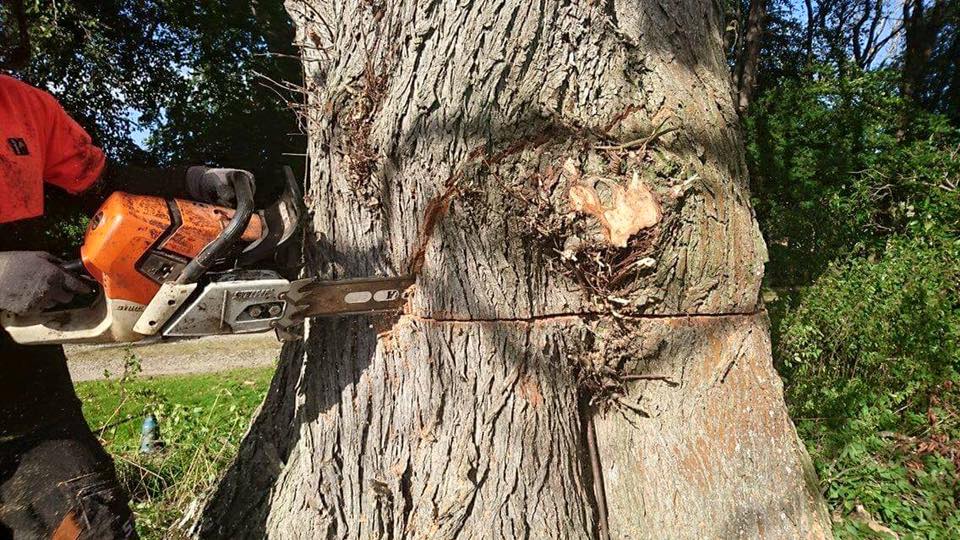The Responsible Method to Tree Harvesting

Tree felling is a essential practice that plays a key role in maintaining the balance between our natural environment and human needs. However, the traditional views surrounding tree felling often overlook the importance of eco-friendly practices. As we face increasing pressures from urban development and the need for timber, it becomes essential to embrace a more considerate approach to tree felling that emphasizes ecological restoration and tree care.
A sustainable approach to tree felling goes beyond merely chopping trees; it includes a comprehensive understanding of woodland habitats. This involves analyzing the health of the tree, its ecological value, and the surrounding environment before making any decisions. By prioritizing responsible felling methods and implementing tree care practices, we can ensure that we safeguard biodiversity while still fulfilling our economic and developmental goals. Embracing sustainability in this vital practice not only benefits the environment but also enhances the quality of life for posterity.
Grasping Green Practices
Sustainable tree felling practices start with meticulous planning and oversight. It entails assessing the forest habitat to determine the most effective approach for tree removal while minimizing environmental harm. spez-ag.ch includes considering factors such as tree species, maturity, health, and the overall health of the surrounding ecosystem. Recognizing the importance of biodiversity, sustainable practices aim to maintain habitat quality for animals while guaranteeing that the forest can regenerate.
Another key element of sustainable tree felling is the use of selective cutting techniques. Rather than clear-cutting large zones, selective cutting facilitates the harvesting of specific trees while preserving the surrounding flora and fauna. This technique promotes self-sustaining regeneration and helps sustain the forest's integrity. Additionally, proper timing of tree felling can serve a significant role in sustainability; cutting trees during specific seasons can reduce stress on the ecosystem and facilitate regrowth.
In conclusion, community involvement and education are essential in supporting sustainable tree felling practices. Involving local communities in the decision-making process helps confirm that the interests and needs of those who depend on the forest are addressed. Informing these communities about the advantages of sustainable practices fosters a collective responsibility toward forest management, highlighting that the health of the ecosystem is related to their livelihood and future sustainability initiatives.

Techniques for Ethical Tree Felling
Sustainable tree felling begins with thoughtful planning and assessment of the adjacent environment. It is important to evaluate the health, species, and location of the trees, especially concerning proximity to structures, water sources, and other notable landscapes. Collaborating with an arborist or forestry expert can provide guidance into the most suitable courses of action, ensuring that the felling process is required and is in accordance with sustainable practices.
Using appropriate tools and techniques is important in minimizing harm during tree felling. Utilizing a chainsaw supplied with a efficient blade allows for neater cuts, reducing stress on the tree and surrounding flora. It is important to follow methods such as the notch cut and back cut technique. This approach assists control the direction of the fall, thereby preventing inadvertent damage to close trees or structures. Additionally, personal protective equipment must always be worn to ensure safety during the operation.
Post-felling care is also important for promoting ecological balance. After a tree is removed, it is essential to address the site effectively. This may involve sowing new trees to replace those that were felled, promoting biodiversity, and enhancing the local ecosystem. Furthermore, creating safety zones around sensitive areas and avoiding soil disturbance can help maintain environmental integrity. Responsible tree felling considers both short-term and future impacts, fostering a more sustainable environment for coming generations.
Effects on Ecological Systems and Communities
Tree felling, when not conducted sustainably, can lead to major disturbances in nearby environments. Forests play a essential role in supplying habitat for numerous species, enabling nutrient cycles, and maintaining soil health. Cutting down trees without care can result in habitat loss, higher erosion, and shifts in local climate conditions. These elements can ultimately lead to reduced biodiversity, as many animals and plants rely on woodlands for existence. Responsible practices aim to mitigate these effects by promoting selective cutting and replanting, which helps preserve the environmental balance.
Communities that rely on woodlands for their livelihood are greatly affected by tree felling. Many people depend on forest resources for food, medicine, and materials. Irresponsible logging practices can strip these resources, leading to monetary issues for local populations. When trees are cut down responsibly and in a sustainable manner, communities can engage in practices such as agroforestry, which allows them to benefit economically while also ensuring the forest's well-being and longevity. This balance can encourage a symbiotic relationship between communities and their natural environments.
Moreover, responsible tree felling practices can promote community engagement and stewardship. When local populations are informed about the significance of forests and their environmental roles, they are more likely to participate in conservation efforts. Initiatives that incorporate community perspectives can yield better forest management and rehabilitation outcomes. Involving communities not only aids in the sustainable use of resources but also builds a sense of ownership and responsibility towards their environment, cultivating a culture of sustainability that can be passed down through generations.
